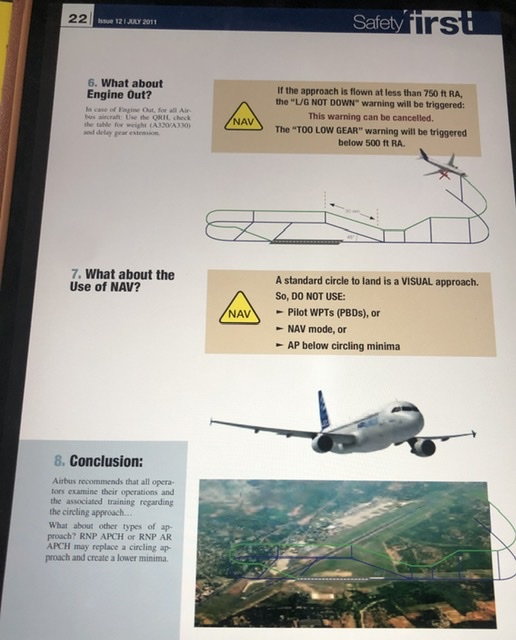Originally Posted by
pineteam
 From Safety First #12 July 2011 available for free to download.
From Safety First #12 July 2011 available for free to download.
To be fair, that document is talking about circle to land approaches rather than visuals. On a visual, as far as I know, the autopilot COULD be used to the FCOM limitation. TRK/FPA would be the most appropriate mode, but again, I don't know why you'd do that, you're just making life harder for both you and the other guy. Perhaps that guidance is echoed for visual approaches, but it doesn't explicitly mention them.
I still think if someone wants to, there is no decent reason why they can't put in a few PBDs and few lines on there. I draw an MSA ring (or maybe even an MRC ring) on the fix page when going to somewhere with an unusual terrain profile. Doesn't mean I am going to fly it. For me it just enhances my SA.
Originally Posted by
Check Airman
How about another scenario? You're in the climb, and just as ALT* engages, ATC gives a further climb and a direct. The PM reads it back, gets into the FMS to attend to the direct clearance, meanwhile the FD bar is now commanding a pitch for level flight. What would your reaction be?
My reaction would be to ask the PM why they didn't change the FCU first before going into the FMS like he or she was taught during line training. It's far easier to remember waypoint VALKO amongst a list of say 10 very different waypoints, rather than whether it was FL120 or FL130 after 30 seconds of searching for the correct waypoint in the FMS and the discussion that has ensued. Be disciplined and it all works just fine!
Originally Posted by
neilki
there’s nothing at all wrong with reaching for the thrust levers.
whats wrong is to fly away from FD commands, fail to notice A/T not transitioning from Thrust Mode
to Speed Mode and wondering why the IAS trend line is heading to 350!!
Interestingly, I went to an instructors conference recently (not as fancy as Singapore I'm afraid) that highlighted how that's no big deal either.
The aircraft will quite happily overspeed and look after itself. I guess we get conditioned by the drama of a low speed event in the sim and via incident reports, that any airbus protection activation results in either a serious reprimand, or dismissal. Apart from a tiny bit of paperwork, nothing more than perhaps a little bit of speedbrake and an FCU
adjustment is required. The guy impressed me when he said that he flies the A320 quite happily at 30-35kts above VMO all day and no damage will occur - he even eats his lunch at that speed! He said that never in the history of the company, has an Airbus ever been damaged due to a highspeed event.
On the contrary, the mess that occurs due to an overreaction to a highspeed event is incredible. People see the red tape on the speed scale as the point at which the wings will fall off (the inverse of the stall strip being the point where the aircraft is no longer flying) and that it is really not a big deal. Overreacting will put the aircraft into alpha-prot and alpha-floor quicker than you can imagine when the stick is yanked back by some unsuspecting pilot.
The big take-away was to leave the autopilot in as it is better at flying at high altitude than you are and an overspeed is no big deal.